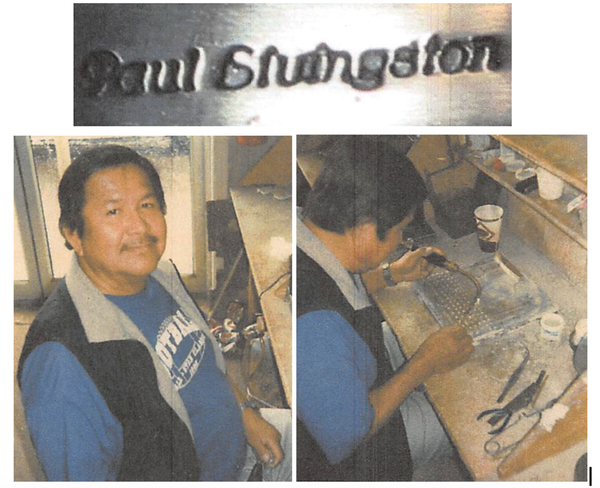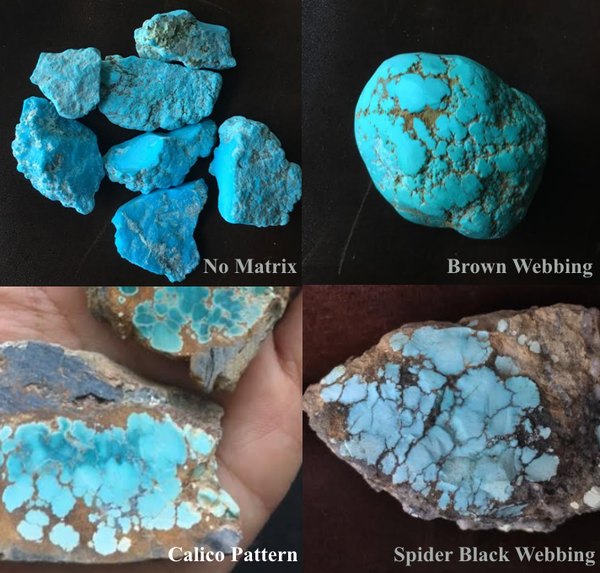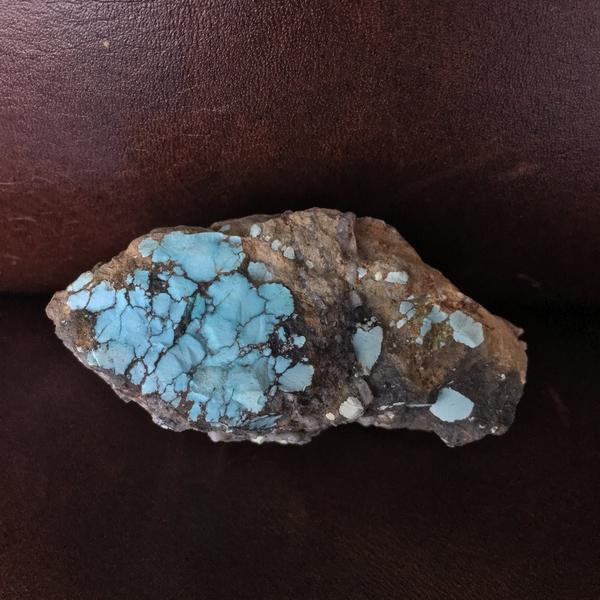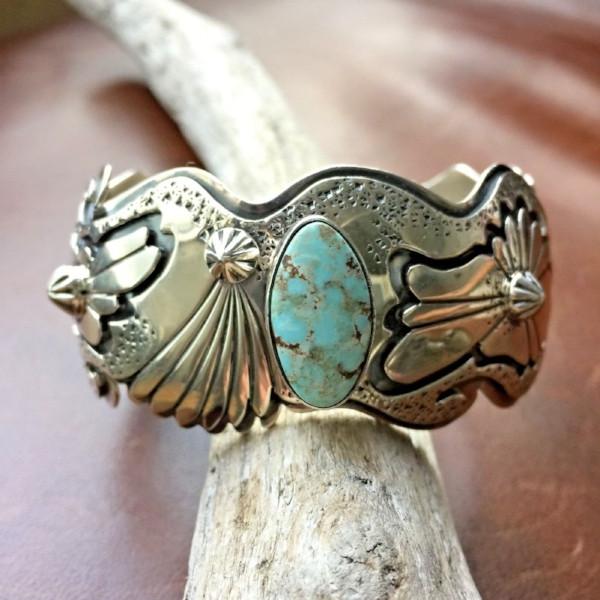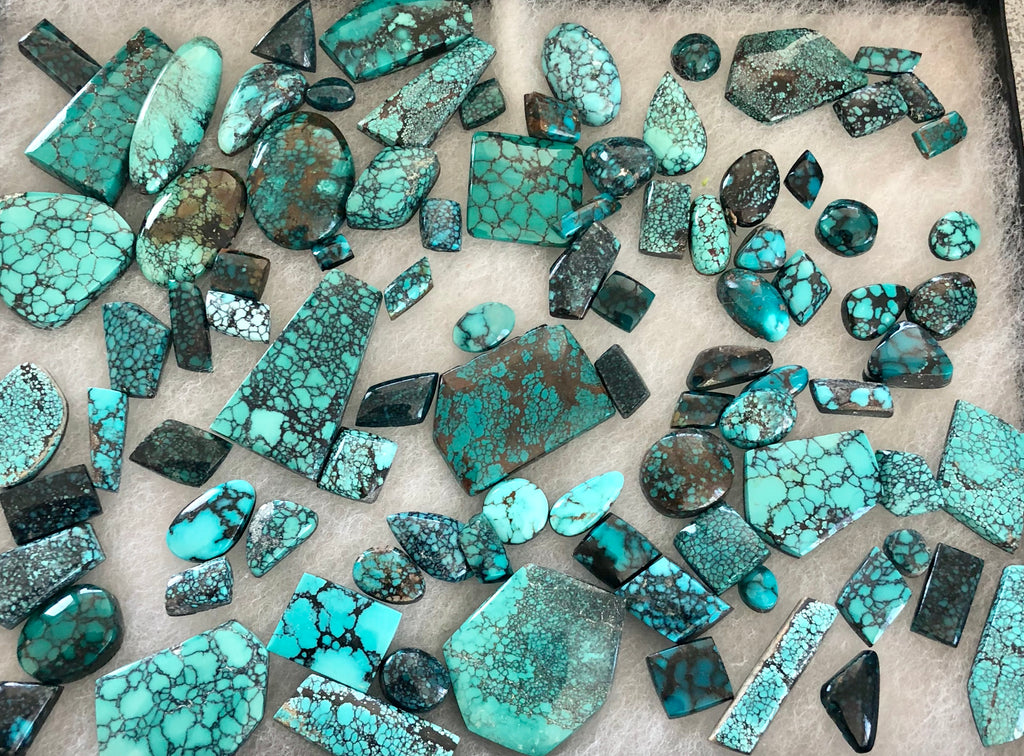Turquoise Blog
Native American Jewelry Artists and Silversmiths We Love
Posted by Toqos Gallery on
Every precious stone has a story of its own. The one for turquoise, we feel, is especially touching and romantic. They say that many, many centuries ago, the Native American Indians would dance and cheer whenever they saw rainfalls. Their tears of joy mixed with the rain and seeped into Mother Earth to become turquoise. For this matter, they understand the beauty and meaning of the stone the most. Most of our turquoise jewelries are made by the native Navajos whom learned their skills through their family traditions. They all have their own unique signatures that you can use to...
- 1 comment
- Tags: native american artists, native american silversmiths, navajo artists, navajo silversmiths
How to Find Quality Turquoise Based on Color and Matrix
Posted by Toqos Gallery on
Whether you’re a collector or looking to buy your first piece of turquoise jewelry, knowing how to assess the value of it will give you confidence in your decision. In this blog, we will look at two major factors -- color and matrix -- that we use ourselves to determine the value of turquoise. Color Turquoise naturally occurs in colors ranging from dark blue to yellow-green. Blue hues of turquoise are caused by the presence of aluminum and copper and are commonly found in Arizona; green hues are caused by traces of zinc and iron and normally found in Nevada....
Introduction to Turquoise
Posted by Toqos Gallery on
Blue Moon Spider Web Natural Turquoise (mined in Nevada) Turquoise is a hydrous aluminum phosphate with a cupric base. So here’s what that means to those of us not pursuing a masters in Earth Science. Turquoise is found in rather arid parts of the world. Water, usually as runoff, comes down mountainsides and settles in the rocks below. The water evaporates, leaving its trace elements behind. If the proper amounts of copper salts and aluminum are present in the rocks, they can come together with the water elements to form turquoise. Turquoise gets its color from the heavy metals...
- 0 comment
- Tags: hydrous aluminum phosphate, turquoise color, turquoise matrix, turquoise treatment, turquoise value
Different Types of Turquoise and the Mines They Come From
Posted by Toqos Gallery on
Turquoise range from different shades of blue to shades of green. Some have matrix, others don’t. Even the matrix differ greatly in color and pattern. To help you identify them better, let's go over a few different types of turquoise that are well known and that we deal with on a daily bases. Dry Creek Turquoise Dry Creek Turquoise Dry Creek Turquoise mine is a mine which is located in Lander County, Nevada. Dry Creek Turquoise has gained much popularity in recent years with its milky white and light blue coloring and brown matrix. This color of turquoise was not...
- 0 comment
- Tags: Carico Lake Turquoise, Dry Creek Turquoise, Fox Turquoise, Kingman Turquoise, Larimar Stone, Lone Mountain Turquoise, Number 8 Turquoise, Royston Turquoise, Sleeping Beauty Turquoise, turquoise mines
The Definitive Guide to Different Turquoise Treatment Methods
Posted by Toqos Gallery on
Even though turquoise makes for breathtaking jewelry, this sedimentary mineral is relatively soft and porous. The softness causes it to easily fracture or chip. Its porous allows it to discolor, stain and fade. Historically, less than about 10% of all excavated turquoise has the hardness and density to be considered gem quality. The rest needs some form of “help” to be considered jewelry quality. For thousands of years, people have treated turquoise. With high quality turquoise increasingly harder to find, more advanced techniques has been developed to “enhance” this stone. We will go through each of the methods for processing...
- 0 comment
- Tags: Block Turquoise, Color Treated Turquoise, Enhanced Turquoise, Natural Turquoise, Oil and Wax, Reconstituted Turquoise, Stabilized Turquoise, Turquoise Treated with Fat, turquoise treatment

